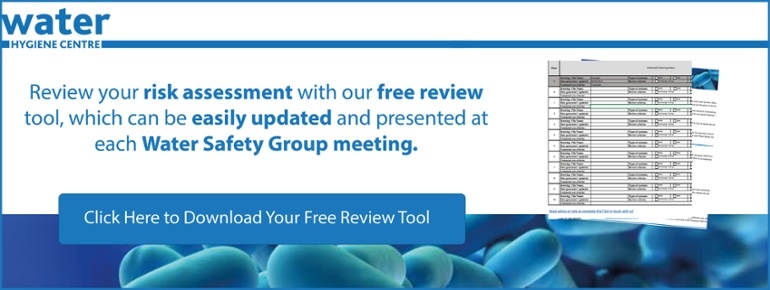Legionella risk is a subject that anyone who manages water systems needs to consider and suitably manage, whether you are involved with an office block, hospital, school or higher education. There may be additional concerns for those running educational establishments compared to a typical workplace environment.
In all these environments the risk of Legionella needs to be suitably managed and the first step in this process is to complete a site-specific Legionella risk assessment. This will help identify the risks specific to your water systems. Once this has been completed the ongoing management of the water systems needs to be in place by producing Written Schemes and/or Water Safety Plans.
Legionella - High Risk Areas to look out for
Whilst any building can have high-risk areas associated with it, those in the education system may have some unique difficulties. Things to look out for include:
- Specific low-use areas. These might include:
- Classrooms not in use;

- Classrooms with multiple sinks, such as science rooms, where some sinks might not be used for extended periods;
- Showers in changing rooms (my memory of school days was that we avoided the showers as much as possible when changing after P.E.);
- Outlets in fume cupboards;
- Parts of the building with RAAC concrete. This has become a significant issue for some schools this last year which can lead to areas of buildings being off limits. This has two issues – firstly it will lead to low-use outlets and secondly, if the areas are off limits for safety reasons then will there be problems for maintenance to access the areas to flush these outlets!;
- Boarding schools or higher education establishments with residential buildings where access may be limited for routine works that would normally be required.
- Classrooms not in use;
Low use and Legionella Flushing
Other difficulties may lie in identifying which outlets are low-use, and are different flushing regimes required at other times of the year. This will likely occur during the school holiday periods. If you compare usage in term time to that in the holiday, then there will be a huge difference.
You will likely have a set of low-use outlets being flushed weekly (in line with the guidance in HSG274 Part 2), although if we can eliminate any infrequently used outlets then this would be preferred. But during the school holidays, there will be extended periods when there may be very few people in the school!
This is especially the case in the school summer holidays where there could be about 6 weeks of lack of use. So, we need to be aware of these risks and put controls in place to manage them, along the lines of flushing all outlets throughout the school on at least a weekly basis.
Not flushing weekly during holidays can lead to routine sampling identifying unwanted bacteria in the water systems that can normally be managed by routine flushing.
Other areas of risk should be considered in an educational setting:
- Emergency showers
- Water baths
- Eye wash facilities
In the first instance, risk assessing should always be the first step to establish if there is a significant risk. Mains-fed emergency showers and eye wash stations will pose a reasonably foreseeable risk for Legionella whereas bottled eye washers do not. Water baths do not pose a significant Legionella risk although there might be other waterborne pathogens to consider depending on the use of the water bath!
So far low-use and Legionella risk, but what about scalding risk?
Education facilities, especially those educating our younger children need to be aware of their need to undertake a scalding risk assessment. This will likely identify younger children as specifically vulnerable to scalding. Where there is a significant risk of scalding and vulnerable people are identified, the use of thermostatic mixing valves (TMVs) is required by the guidance in HSG274.
Care should be taken not to blanket install TMVs in areas where they are not required, i.e. where there is no significant risk of scalding, such as staff only accessible areas. There are two main reasons for this; firstly the presence of TMVs does increase the inherent Legionella risk ,so minimising the numbers will help reduce your overall Legionella risk; secondly, each TMV will need to be maintained with an annual inspection, clean, descale and disinfecting of any strainers or filters associated with TMVs.
HSG274 guidance says that you should remove TMVs that are not needed.
I am sure there will be other challenges facing those of you responsible for managing our educational establishments but with the right help and support these risks can be suitably managed.
If you have questions regarding the issues raised above or would like to speak with one of our consultants please click here to get in touch.
Editor’s Note: The information provided in this blog is correct at the date of original publication August 2024.
© Water Hygiene Centre 2024









